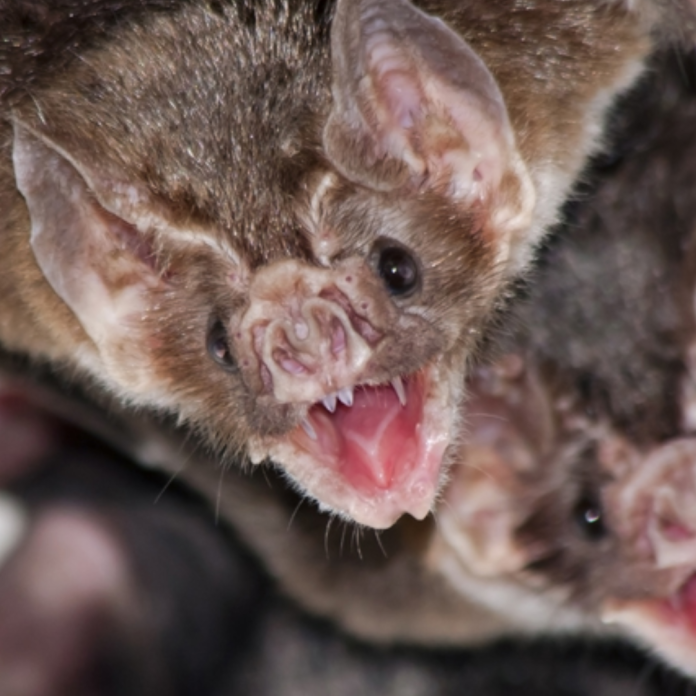While most of the world sleeps, vampire bats quietly emerge from their hiding spots—whether in dark caves, mines, tree hollows, or abandoned buildings—throughout Mexico, Central America, and parts of South America. These nocturnal creatures glide through the night air in search of their next meal. Named after the mythical bloodsuckers of legend, these small mammals rely on the blood of other animals to survive. Their primary targets are livestock, including cows, pigs, and horses, as well as birds. Though it’s rare, they may occasionally bite humans for blood.
However, unlike the iconic vampire, these bats don’t suck blood. Instead, they use their sharp teeth to make a small cut and then lap up the blood with their tongues. Their feeding technique is so quiet and gentle that they can often drink for over 30 minutes without disturbing their prey. Remarkably, this process doesn’t cause the animal much harm.
Vampire bats possess several adaptations that make them well-suited for this unique feeding behavior. Studies have shown that these bats can locate prey by detecting the sounds of an animal’s breathing. In fact, they can recognize and return to the same animal night after night, based on its breathing pattern. Unlike other bat species, vampire bats are capable of walking, running, and even jumping, which helps them approach and latch onto their prey. Heat sensors on their noses enable them to identify the best feeding spots on their prey’s body, while their powerful hind legs and specialized thumb help them take off after feeding.
What happens if a vampire bat can’t find a meal? If it goes two nights without feeding, it will die. However, some vampire bats display surprising acts of generosity. Well-fed bats will often regurgitate blood to share with others, typically in exchange for grooming. Female bats, particularly in captivity, are especially caring and have been seen feeding new mothers for up to two weeks after they give birth.
Though vampire bat bites are painless, they can transmit diseases such as rabies, which can be harmful to livestock. Despite their fearsome reputation, vampire bats can actually be quite tame and even friendly toward humans. One researcher reported that his bats would come when he called their names. (Of course, it’s essential to remember that wild animals should never be handled.)


